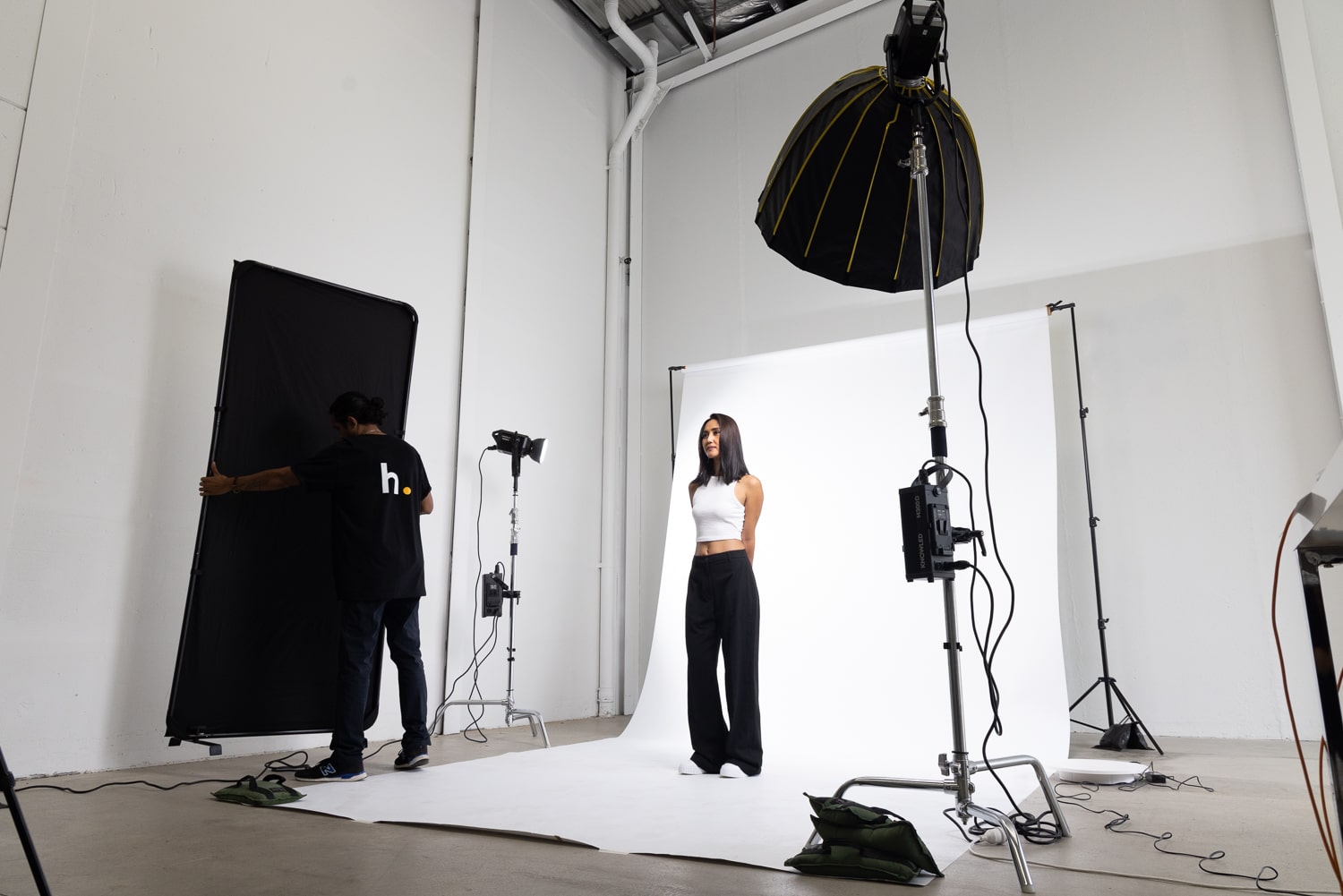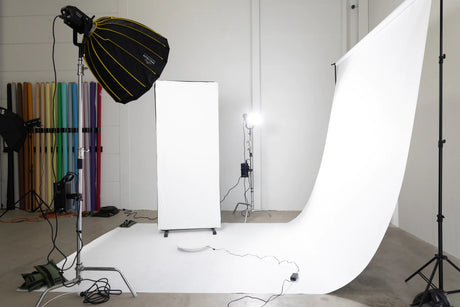The life of a fashion photographer may seem glamorous, but there’s more to it than standing at the end of a catwalk with a camera. There are many aspects to fashion photography and numerous ways to capture images for the fashion industry. This blog post details the equipment and types of shots required for a compelling e-commerce lookbook.

What is Fashion Photography?
Fashion photography focuses on displaying clothing and accessories for advertising. It is found in magazines, catalogues and websites to show the latest trends and designs. Fashion photography often involves dramatic lighting and unique compositions to create the specific mood or atmosphere requested by a marketing team. E-commerce businesses need high-quality fashion photographs to attract more buyers. Customers who see sophisticated photos are more likely to click on a product to learn about it. When customers can clearly see the products they’re interested in, they are more willing to make a purchase.
To create an e-commerce lookbook, a fashion photographer should build a collection of photos that showcases specific products from an online store. Combining appropriate models, fine clothing, accessories and a beautiful location helps customers imagine how the products might fit into their lives. This lookbook is often shared on a company’s website, on social media, and through email campaigns to promote products and inspire customers.
Types of Fashion Photography
There are many types of fashion photography; here are three styles that are suitable for a lookbook.

Invisible Mannequin Photography
With invisible mannequin photography, the mannequin is removed from the image, leaving only the clothing. This is done by taking multiple photos of the garment on a mannequin and then merging them in post-processing. The mannequin is then removed to create the illusion of a three-dimensional object. This is achieved through editing programs such as Photoshop or Lightroom. Invisible mannequin photography shows the fit and design of clothing without the distraction of the mannequin. When shooting invisible mannequin photography, the clothing must be evenly-lit, preferably with studio lights. Invisible mannequin photography is a relatively easy and budget-friendly type of fashion photography because expensive models are not required.

Flat Lay Photography
In flat lay photography, the clothing is photographed on a flat surface. Flat lay photography can be a great way to showcase a product’s details and create an enticing image. There are a few things to remember when shooting flat lay photography. First, the apparel needs to be well-lit from studio lights or flashes. Second, choose a plain background. A solid colour is fine as long as it complements the subject. White is a good choice as it will never clash with the clothing. Third, find a way to arrange the subject that is visually appealing. Fashion merchandising with flat lay photography is easy to do and doesn’t require a large budget.

Model Photography
Model photography is the most common type of fashion photography, and it is often used to promote fashion brands and products in lifestyle shots. Model photography can be done in traditional settings, such as studios and outdoor locations, or it can be done on the streets for a contemporary, edgy look. Street shots have become a popular style of fashion photography on Instagram. Street photography featuring fashion models in casual clothing often has a more relaxed approach, emphasising comfortable and practical clothing.

Planning a Shoot
Professionals don’t leave anything to chance. Making a checklist may seem boring to creative types like photographers, but it is essential for being productive and reducing costs. Here are a few ideas for planning a shoot.
Creating a Mood Board
A mood board is a collection of images that communicate the overall feeling of a photo session. Ideally, the person hiring the photographer will supply a mood board to help the camera user plan the photo shoot. It provides a visual reference that indicates the direction and style the company hopes to achieve with the shots. Ensure the mood board aligns with the brand’s identity and use appropriate colour palettes, tones, patterns and lighting that match the desired aesthetic. When the style of lookbook photography has been established, the mood board can be shared with the stylist and other team members to communicate the vision for the photography session. A mood board helps the photographer gather all the props and equipment in advance rather than having to find it during the shoot.
Choosing the Right Location
The location of a fashion photo shoot is just as important as having a suitable model. A good location creates an atmosphere that reflects the clothing style being photographed. Elegant clothing requires a sophisticated background, whereas streetwear looks better in an edgy and urban area. And a nature reserve is more appropriate for a more natural and relaxed vibe. Fashion catalogue shots that must have a white background are bound to studio conditions where plain backdrops are available. The location should also reinforce the theme being presented. For instance, when photographing a model in beachwear, shooting on a beach offers continuity and perspective. The location informs the styling, lighting, and poses, so select a place that aligns with the vision intended.
Camera
Professional photographers must have a DSLR or mirrorless camera. Although smartphone cameras have improved significantly over the last few years, the quality of the images from these devices is unsuitable for glossy magazines or billboards. The larger sensors on DSLR and mirrorless cameras capture more detail and produce higher-quality images compared to point-and-shoot or smartphone cameras. They also offer greater control over aperture, shutter speed, and ISO, allowing for more precise photography. And DSLR and mirrorless cameras are required for synching to external flashes and strobes to capture even more creative images in a wide range of e-commerce photography situations.

Lighting
To capture impressive fashion shots for an e-commerce lookbook, a photographer needs lighting equipment that provides a consistent, flattering, and controllable light source. The most commonly used lighting equipment for fashion photography is the strobe. These lights are often modified with softboxes, grids and umbrellas to create different lighting effects.
To begin a lookbook project, the Professional Fashion Lookbook Portrait and E-Commerce Photography Lighting Kit and the Professional Fashion Lookbook Portrait and E-Commerce Photography Lighting Kit v2 are complete systems that enable the photographer to create professional-grade editorial and fashion images with ease. Each includes a pair of 400w flash strobes, a heavy-duty backdrop stand, a paper backdrop, backdrop pegs and two large 95cm octagonal softboxes. For a more versatile flash kit, try the Godox 2x AD600Pro Professional Portable Studio Flash Lighting Kit, which has a powerful 28.8V/2600mAh lithium-ion battery pack that provides up to 360 full-power flashes. This system can be taken to any location and includes two Godox AD600Pro strobe heads, heavy-duty stands, a pair of large 120cm collapsible octagon softboxes, a Godox X1 trigger, HSS, and TTL capabilities. Commercial photographers shooting large volumes and needing higher speeds should look at the Godox 2x QT600IIM 600W (1200W) HSS Flash Strobe Lighting Kit. It features two QT600IIM heads, two 260cm heavy-duty studio stands, two large 90x90 softboxes with grids and an XPro trigger.
Continuous lights are a different option providing a constant source of illumination that allows the photographer to see how the light affects the subject in real time. They are suitable for beginner photographers and videographers. The Godox KNOWLED M300D 300W Daylight LED Video Light is ideal for still shots or making videos for social media. Having a pair of these lights, along with a couple of Spectrum 380cm Air Cushioned Heavy Duty Tripod Light Stands and Godox Softboxes with Grids, makes it easy to start a career as a fashion photographer, video producer or indie filmmaker.
Tripod
A heavy-duty tripod is necessary because it provides a stable platform for the camera. When a camera is mounted on a tripod, it is less likely to move, which means sharper images and consistent photos.
Backdrops
White or light grey backdrops ensure the viewer stays focused on the subject of the fashion shoot rather than being distracted by the background. Neutral backdrops also help the photographer capture colours as accurately as possible. Seamless rolls of plain paper are affordable and readily available from Hypop. Slip a roll onto a backdrop stand, cut off parts of the roll that became marked during previous use and pull the clean paper to the floor with a curved baseline to eliminate shadows. Fasten it to the floor with tape, position lights and subjects, and this pristine background will remove the need for background editing.

Props and Styling
Using props in commercial photography is a simple way to enhance the overall look of images. They can also tell a story or create a specific mood or atmosphere in a fashion photo shoot. A stack of books can add an intellectual vibe, and a flower might represent love and romance. A scarf can add a pop of colour, while a piece of jewellery can draw attention to a particular feature. When choosing props for a fashion photo shoot, it is essential to consider the clothing style being photographed. For example, if photographing a vintage look, have props that are also vintage.
Extra Thoughts
See part two of this blog post for information on other types of fashion shots and some editing tips!










